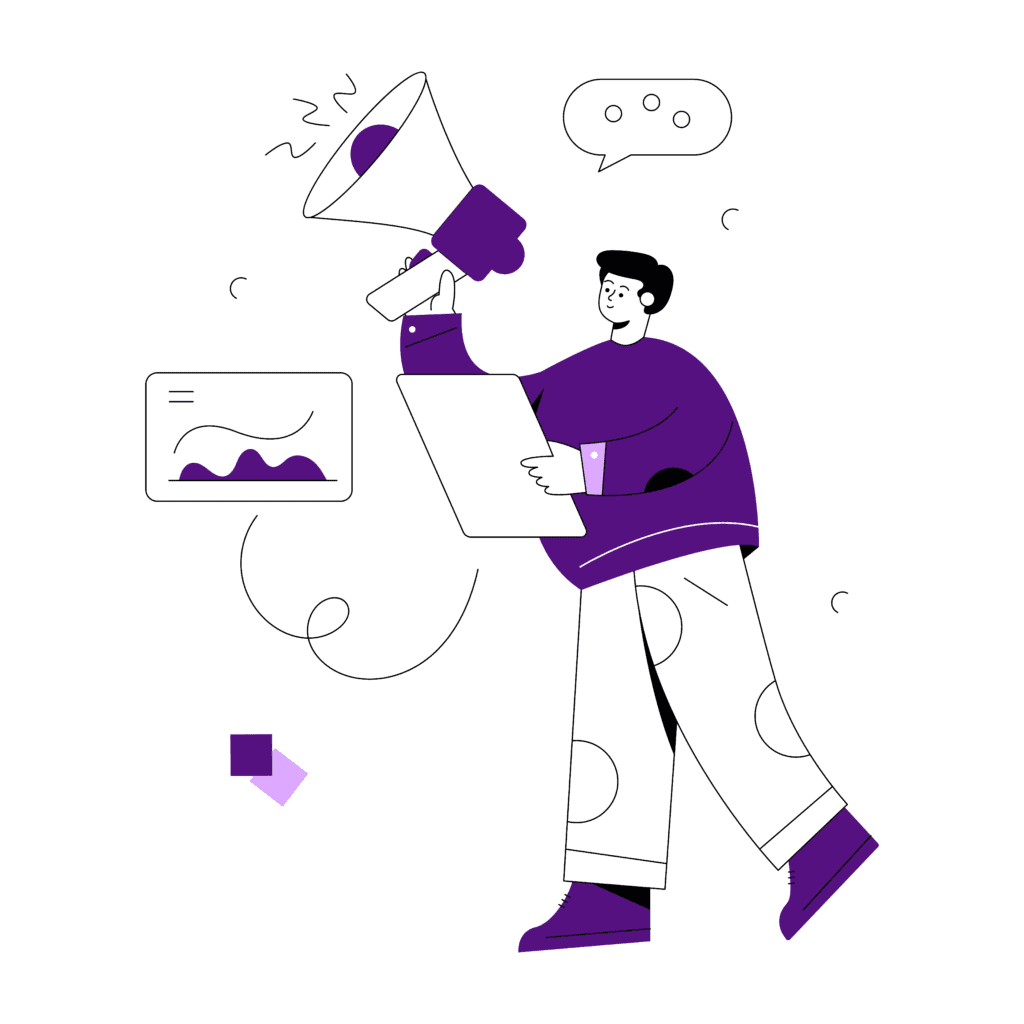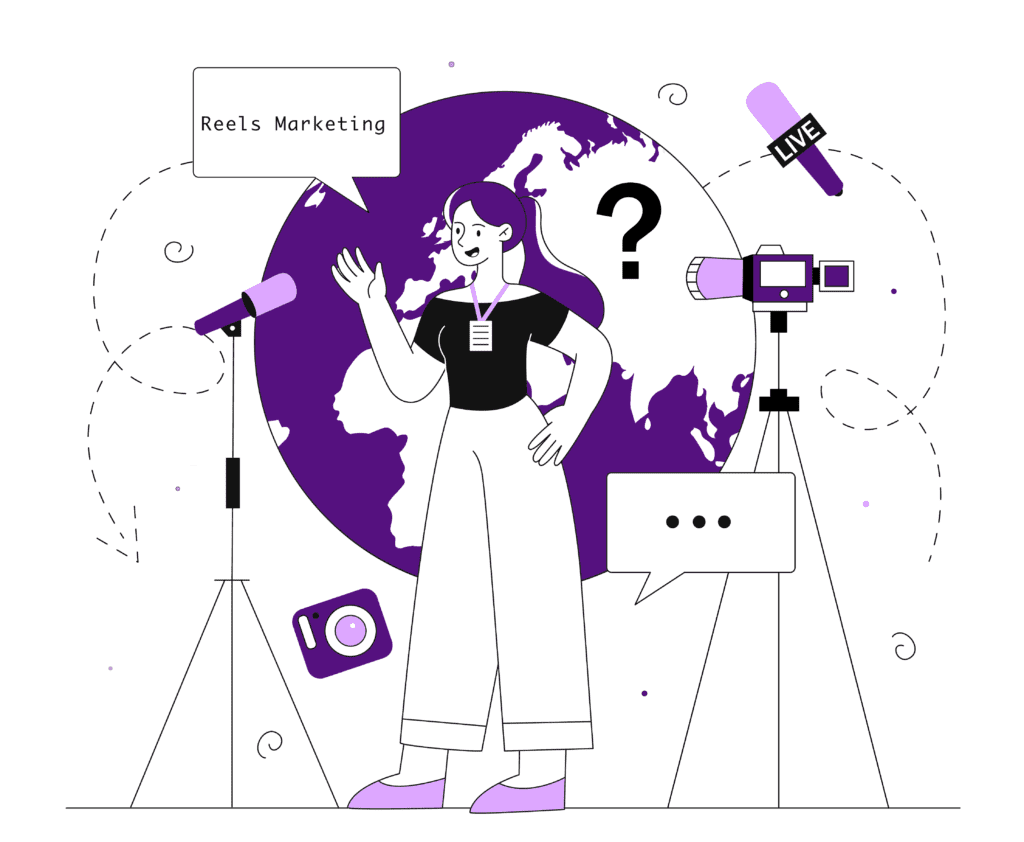Most people have taken at least one poll or survey in their lifetime. Questionnaires are great for businesses to get answers to their most pressing questions. They provide feedback for leaders, too. And also are helpful in gathering research data and information.
There are different types of surveys and depend on two main factors. First are the respondents, and the second is the main topic. People must be careful when they design the survey. The right words and choices will result in clearer communication and customer data. Other benefits include useful insights and a more successful service or product.
This guide walks through some sample survey questions and their different types. It also reviews moments when a company or group would use them.
Table of Contents
- What’s a Questionnaire & What is it Used For?
- How Questionnaires Differ From Surveys
- Typical Questions in a Survey
- Benefits of Using a Questionnaire
- The Downsides of Using a Questionnaire
- Examples of Questionnaires
- Ways to Distribute Questionnaires
- Questions to Expect
- Avoid These Kinds of Questions
- How to Design a Questionnaire
- Questionnaire Templates
- FAQs
What’s a Questionnaire & What is it Used For?

A questionnaire is what it sounds like. It’s a group of questions that people answer according to their opinions or experiences. The accuracy of a questionnaire definition depends on why it exists in the first place. Here are a few different reasons why someone may order a survey.
- To gauge interest in a product or service
- To explore individual opinions and experiences
- To rate a product, service, policy, or workplace
- To collect data
- To do deeper research into an organization or demographic
- To measure progress and success
These are a few examples of why individuals and groups might submit a survey question. Also, it may look different depending on its specific purpose. Some of them are more open-ended and allow participants to write in their thoughts. Others rely on multiple-choice questions, while others use a measurable rating scale.
The great thing about customer polls is that there are no right or wrong responses. All the feedback is useful to some extent and can provide insights into research and development.
How Questionnaires Differ From Surveys
Most people use the words “questionnaire” and “survey” to refer to the same thing. While this is usually okay, it’s still important to differentiate the two types. In 2024, the question-asking and data processing sometimes happens simultaneously, hence the confusion. Here are the primary differences between the two entities.
A Questionnaire is
- A set of questions
- A tool used to conduct a survey
- Sometimes not used for research at all (ex: job applications)
- Able to stand on its own
- Sent to one person
A Survey is
- The process of gathering and interpreting data
- Typically utilized for research analysis (ex: policy-making)
- Almost always paired with a question set
- Sent to a group of people
In conclusion, a survey will include a questionnaire, but not vice versa. Public polls can be sent to just one person, while surveys are usually spread throughout a community or group. The latter also has an end-goal of gathering data for further research.
Question Types to Expect in a Survey Questionnaire

Again, not all polls have the same goal in mind. For example, one may ask for information about the concert experience. The other may be inquiring about the audience’s opinions on a brand. Below are some question examples to illustrate the differences.
1. “How would you rate your experience with your order or product? Very dissatisfied, dissatisfied, neutral, satisfied, or very satisfied?”
This is a common inquiry that businesses and brands like to pose to buyers. The experts in product development want to know why people aren’t buying an item. They might be curious about why one item is selling more than another. The respondents’ answers can provide some deeper insights into this. Then, the company may adjust its marketing or development efforts.
2. What was your favorite part of our product/service? What was your least favorite?
These types of inquiries often begin a poll. It’s a surefire way to get participants’ attention and get them excited about it. This style of survey question piques interest and gives people a chance to express their unique opinions and experiences. It establishes rapport between them and the company. Brands can use the information and compare it to other products or services.
3. How could our product/service improve?
While businesses might not always like the answers, the feedback contains handy information. It’s nice to know what the buyers like about something, but developers also need to know what isn’t working. This style of inquiry invites participants to point out their least favorite part of the product or service. If the company asks enough people, they can start to see where they aren’t meeting expectations.
4. On a scale of 1-10, with 1 being very unlikely and 10 being very likely, how likely are you to recommend our product/service?
People are indeed more likely to buy an item if someone recommends it. They will trust a friend more than an advertisement for it. Lots of companies ask this on their polls because it provides valuable insights. Sometimes, it has an open-ended space so respondents can write their opinions.
Benefits of Using a Questionnaire
By now, it should be clear that questionnaires offer plenty of advantages for brands and organizations. Now it’s time to dive a bit deeper into how exactly groups can benefit from good survey questions. Even in 2024, businesses continue to reap the rewards of asking for client feedback.
1. Inexpensive
This is one of the most low-cost ways to get replies from clients. Plus, there are different ways to send them out, including via email or as a pop-up on the company website. Online polls are the cheapest because there are no in-person interviewers or proctors. Also, there aren’t added costs for things like mailed-in forms. The only way an online survey would get expensive is if the brand places ads in it or offers a monetary incentive for completing it.
2. Makes Gathering Data Easier
Whether it is going out to a handful of people or hundreds of them, gathering the feedback is quite simple. This is especially true if it is conducted online. The information comes back faster and can be put into a computerized analysis tool. Some of these portray the findings in percentages while others display convenient, easy-to-read graphs.
3. The Results Are Quick & Measurable
In 2024, everyone wants everything to come faster. The same is true for any survey results. Fortunately, there are tools and strategies that businesses can use to send out questionnaires at a rapid pace. Organizers no longer have to rely solely on mailed-in order forms or awkward over-the-phone interviews. Now, fewer employees have the opportunity to reach more consumers in less time.
Plus, receiving and gathering feedback is nearly an instantaneous process. Thanks to computers and algorithms, there’s less reliance on human labor (and error). Rather, the findings come in, and the computer can represent the results in convenient bar graphs, pie charts, or other visual aids.
4. Makes it Easy to Compare
Since this endeavor revolves around quantitative research, the results are measurable. Analysts get an option to compare them to other data points. This is why some people might notice that businesses or organizations tend to send out new polls at the end of every quarter or year.
In 2024, machines are better than ever at compiling information and comparing the findings to previous survey results. They may even differentiate between specific demographics.
5. Appeals to a Wide Range of Industries & Topics
A questionnaire can essentially cover any kind of topic relating to any job field or niche. This is great since all businesses compete for more customer attention and interaction.
Analysts send online forms via social media, the company’s website, email, or through the mail. These days, there are plenty of ways to reach participants. Moreover, brands can ask as many Q’s as they want, although it’s best to keep it short and sweet.
6. Usually Not Time-Sensitive
Those who can recall standardized tests from school will remember the anxiety of time limits. Fortunately, most online surveys don’t put such pressure on participants. By giving them time to answer, many people are more likely to give it a look and put effort into their feedback. Not only that, but they will probably feel more comfortable providing their honest opinions rather than simply saying what they think the business wants to hear.
7. Anonymity
Finally, so many organizations rely on surveys, particularly online ones, because of the anonymity. An over-the-phone or in-person questionnaire can make participants nervous. This can lead to un-truths in their responses.
By contrast, a mail-in, online, or email poll makes customers feel invisible, so they aren’t likely to hold back. In other words, they are fine answering truthfully. As strange as it may seem, the lack of humanness in the survey usually allows participants to open up more! Brands that are looking for straightforward feedback and honesty should opt for anonymity.
The Downsides of Using a Questionnaire

Of course, this isn’t always a fool-proof way to gauge customer reactions and company success. Even with a great design and the right types of questions, a survey might not cover all the bases. Here are some pitfalls researchers should avoid.
1. Unanswered Questions
So, there isn’t a 100% failsafe way to avoid this pitfall, but it’s important to point out. Sometimes, a questionnaire may be too long, or the questions too invasive, that participants simply don’t respond. There is always the chance that some questions will remain unanswered. Yet, organizers can do their best to prevent that from happening.
- Avoid “optional” questions
- Keep the survey short
- Don’t ask complicated or potentially intrusive/offensive questions
2. It’s Hard to Read Respondents’ Feelings
Even with a well-thought-out approach, nothing is perfect. It isn’t always possible to catch the participant’s attitude or true feelings. Sometimes, a set of online inquiries can seem impersonal and robotic. It also lacks the experience of hearing the tone of the respondent’s voice or observing their body language as they answer. To bypass this frustration, some organizations rely on scaled or rated responses. For instance, they may ask people to rate their experience on a scale of 1 to 10, with 1 being the worst and 10 being the best.
3. Trouble With Analytics
The types of questions can dictate how easy it is to read the compiled results. For instance, a multiple-choice survey could accurately measure customer attitudes.
However, an open-ended response is a bit trickier. First of all, the answers need a review by a human being rather than a machine. There is also way more variation in the feedback, which can make it hard to analyze when compared to multiple-choice responses.
One way to get around this difficulty is through semi-closed-ended questions:
- Where did you hear about us?
- What did you use this product for?
4. Thoughtless Responses
Odds are, one or two participants will lazily answer the questionnaire. Others won’t put much effort into their response. Some people may have difficulty understanding the question in the first place.
Also, some people may rush, with or without a time limit. They might end up providing an answer without fully reading the question. It’s very difficult to prevent these kinds of thoughtless responses. This can make compiling the results a bit more complicated.
5. A One-Size-Fits-All Approach
Any marketing expert will proclaim the validity of personalization. When it comes to a poll, this concept is also important. It’s not enough to simply list some questions and expect people to take the time to answer them.
Rather, organizers should be sure to add some personal touches and allow for a bit of customization. This means people should take time to craft the questions. They should also provide meaningful responses in the case of multiple-choice questions. Also, businesses should try to address participants by name, if possible. They can do this through email correspondence or social media.
6. Problems With Accessibility
These days, businesses are more aware of the accessibility issues that consumers face. Some communities may have higher illiteracy rates, which can make it hard to get readings on that specific demographic.
Other times, participants may have visual or auditory impairments. This prevents them from taking the survey without assistance. The best policy is to take these accessibility issues into account when creating a questionnaire.
7. They Can Be Long & Tedious
No one wants to sit by their computer for an hour, filling out research and data forms, especially if there is no real incentive on their end. Fatigue can set in, resulting in thoughtlessness or incomplete surveys. That does nothing to help companies compile and analyze their findings.
Add to that the fact that so many brands these days are sending out customer surveys, and it can be overwhelming for consumers. The primary way to get around this dilemma is by making the questionnaire short and sweet. Use concise, clear language, and keep the number of questions to around 10 or less.
Examples of Questionnaires

As stated above, there are different question styles that companies can use when conducting a questionnaire. Some respondents prefer to have free-flowing questions, while others veer towards a more structured approach. Here’s how to make either choice work so that businesses can get clear, solid results.
1. Unstructured Exploration
The purpose behind these questions is to gather qualitative info instead of numerical evidence. This is a more exploratory approach that opts for a less structured layout. That doesn’t mean that there’s no thought put into it, though.
Open-ended responses typically appear in these kinds of surveys. They allow participants to provide their insights and preferences without restrictions. Some reasons why a business may want to steer towards an exploratory questionnaire include:
- Brands in the early development stages
- For research purposes
- To test a hypothesis
- To learn more about a target audience/market
2. Numerical Evidence
There are more standardized questions that gather quantitative or numerical info. This more structured questionnaire records quantifiable data for analyses and research. Think of the questions in this kind of survey as measuring quantities:
- How many? (How many times did you try the service?)
- How much? (How much did you buy?)
- How often? (How often do you visit the brand’s social media page?)
- For how long? (How long have you been a customer?)
An exploratory questionnaire tries to gather details for a hypothesis or general idea. Quantitative surveys already have a purpose in mind. The results will help with testing assumptions or fine-tuning prototypes.
Ways to Distribute Questionnaires

There were references earlier to online surveys, which take several forms. There are also offline methods for conducting a survey. This is where organizations may explore the various means of distributing questionnaires. They can see which may best suit their company and goals.
1. Over the Computer
The majority of people own or have access to a computer or mobile device, so a computer questionnaire is a popular choice among companies. These can be sent out via email, through social media, or as a pop-up when someone visits a brand’s website.
Pros:
- Inexpensive
- Time-efficient
- Accuracy
Cons:
- Easy for clients to ignore
2. Mail-In Surveys
In this day and age, mail-in surveys are becoming few and far between. That said, wider market research studies may still rely on them. The process is also more in-depth and time-consuming because the organization has to mail the question form out. Then, the participant needs to fill out the form and mail it back. On the other hand, they can complete it at their leisure, and there’s more anonymity since they aren’t speaking to someone in-person or over the phone.
Pros:
- Anonymity
- Good for wider market research
Cons:
- Time-consuming
- Tedious process
3. Over-the-Phone
Telephone questionnaires are also becoming more obsolete. Some businesses still use them, though. They’re straightforward and involve a researcher calling a customer or volunteer over the phone. Typically, the participant and organizer come to an agreed-upon time to conduct the “interview.” In some cases, the questionnaire is pre-recorded and requires the respondent to use their keypad to answer the questions.
Pros:
- Direct results
- Quick once the participant is on the phone
Cons:
- Can get expensive
- Participants might be hesitant
4. On-Premises
This survey is perhaps the most involved. It requires the interviewer to go to the participant’s house or workplace or to meet them at a predetermined public location.
This method may appeal to individuals who are stuck at home. Alternatively, it could be a good way for organizers to conduct multiple interviews at once in the workplace. On the other hand, this is a lengthy process and seems a bit silly when online surveys are much more streamlined.
Pros:
- Interviewers can gauge the participant’s body language and tone of voice
Cons:
- Costly
- It takes a lot of time to complete
Questions to Expect

Just as there is a variety of ways to distribute a survey, there are different questions that can appear on questionnaires. Some organizations sprinkle a few question styles into their surveys for higher engagement. Below are the most common examples of good survey questions.
1. Yes/No Questions
Also known as dichotomous queries, these are survey questions that require a simple yes or no. It is one of the easiest ways to get an answer from participants, but it’s not always the most useful. This is because between “yes” and “no,” there are lots of gray areas.
2. Open-Ended Responses
This kind of question allows for much more participant freedom. Similar to an “essay question” that students might see on a test, an open-ended response requires more thought and input from the individual. On the downside, it might intimidate respondents. However, the advantage is greater exploration and insight into customer attitudes.
3. Multiple-Choice
This is a straightforward question style. Individuals read a question and then select from several possible choices. Typically, there are four options, but some surveys might include more or maybe just three.
The benefit here is that it’s almost guaranteed that organizers will get some kind of answer from respondents. The disadvantage here is that multiple-choice responses can be too narrow and may not include a person’s preferred answer. To avoid this problem, there is sometimes an “other” response option.
4. Quick-Response Images
Also known as “pictorial questions,” this style relies on images more than text in the answers. For instance, a person may read the question and then have a series of pictures to choose from as their response. Images tend to invite more participation than words, so it’s a tactic worth trying out.
5. Rating Scales
Finally, a scaled question is quite useful in that it helps businesses get a better idea of how customers feel. Just as a doctor would ask a patient to rate their pain on a scale of 1 to 10, companies might do this with client satisfaction. These questions can also be scaled on an “agree-disagree” range in response to a statement.
Unhelpful Questions to Avoid
An understanding of question styles is important, but businesses should also know which kinds of inquiries to avoid. There are a few types of queries to steer clear of to maintain positive interactions with respondents. Moreover, the way that the question is, worded can also leave some respondents feeling attacked, confused, or intimidated. These are emotions that organizers want to avoid, so take a cue from these guidelines below.
1. Hypotheticals/What-Ifs
While people talk in hypotheticals all the time, this is something that companies want to avoid in their surveys. First of all, they could be asking a participant a “what-if” question that doesn’t apply to their current circumstances. Secondly, folks tend to be quite bad at determining how they would act in the future. This can lead to collecting skewed, inaccurate, or irrelevant findings.
2. Positivity/Negativity Bias
Most people have taken a survey or been asked a question that felt leading. It could have been because of extreme positivity or negativity. When the survey presents the question with this lens, it creates a bias that can result in inaccurate findings.
3. Offensive/Inappropriate Questions
Finally, organizers must be sure to avoid any topics or queries that could easily offend or embarrass participants. Even though most polls are anonymous, there is still a level of vulnerability. After all, respondents are opening up to the company. If they feel ashamed or offended by a question, they’re likely to leave the survey altogether.
How to Design Engaging Survey Questions

While it’s important to know what to avoid, it’s also crucial to understand the elements of a successful questionnaire. The creation process is one of the most critical points, so it’s worth paying ample attention to. Without well-crafted queries, researchers won’t get the details they need, and all of that effort will be for nothing.
When creating survey questions, remember the primary goal of the questionnaire. It could be to gather public data or to gauge consumer interest in a product. People might want to get feedback on a business or service. This will influence the types of questions, as well as how to organize the entire questionnaire.
1. Determine the Goal of the Questionnaire
The first step is to zero in on the purpose of the questionnaire. Without a solid goal, businesses aren’t going to know which questions to ask and how to reach their participants best.
A well-defined purpose makes the rest of the process smooth and efficient. Organizers can always go back to that goal when thinking about which questions to ask or whether a specific topic is necessary or not.
Earlier, there was mention of the differences between questionnaires and surveys. Keep that in mind, too. If the organization is at the beginning stages of analysis or creating a prototype for a product, then they will want to ask more exploratory queries. A company that just completed a workplace event may want to collect employees’ feedback about their experience. In this case, a scaling model makes more sense.
2. Identify a Target Audience
Another crucial part of the initial creation stage is identifying a target market or audience. Keep in mind that even within a certain demographic, there are going to be sub-groups. Businesses should take their time to do an analysis of these groups and figure out the best ways to reach out to them.
If they are trying to reach the demographic as a whole, they still want to be mindful of the different experiences and abilities of the sub-groups. This may require more than one questionnaire, or it could mean crafting the responses in a way that allows for more wiggle room.
3. Decide How to Reach the Audience
Part of that initial research stage is determining how to reach the target audience best. Some groups may take well to social media surveys, while others may do better with email or even in-person interviews.
Organizers should remember that the questions depend on how they distribute their polls. For example, people may be more willing to respond to an open-ended inquiry if it’s over the phone or in-person.
4. Be Clear & Concise
Another thing to think about is the clarity of the questions. No one wants to slog through a poorly-worded survey with ambiguous responses. It’s not fair to put voluntary participants through that.
That said, it’s also important that businesses don’t pepper their questions and answers with biases. Sometimes, a survey can ask leading questions. In other words, it’s obvious which answer the creator wants. Along the same lines, it’s better to start with warm-up queries that get the person comfortable. No one wants to dive into revealing their true intentions and opinions straight away.
Finally, the end of the questionnaire is a great time to add some space for additional comments or feedback. This can be as simple as a final “Is there anything else we should know?” question.
5. Be Careful With Language
It’s often easy for businesses or researchers to use industry-specific vocabulary. Yet, the average person may find this annoying or intimidating. It severely detracts from the purpose of the survey, too. People are far less likely to stick to a questionnaire that contains hard-to-understand words. They also don’t want to delve into tricky topics that the average participant wouldn’t be familiar with.
It’s also crucial that the vocabulary is clear and concise. For instance, “media” might refer to anything, but “TV shows” is much more understandable.
6. Choose a Question Style
Something that all good questionnaires have in common is that the organizers thought long and hard about what kinds of questions to ask. There are examples of typical question styles above, so that’s the best place to start.
Again, this all comes down to thinking about the purpose of the survey. If businesses want more profound insights, then open-ended responses could be a good idea. For those that are looking for more quantifiable data, they may want to stick with yes/no questions or multiple-choice responses.
Remember, exploratory inquiries are good for the beginning stages of development. Numerical evidence works best for proving/disproving a hypothesis or gauging the success of a prototype.
7. Have an Ordered System
Any good questionnaire has a logical flow to it. Ideally, the questions will feel intuitive, and there will be a sort of “warm-up.” This prepares participants to delve into deeper insights. The end of the survey is the chance for people to leave their final opinion. When dealing with heavy topics, it’s better to start with the least sensitive questions and go from there.
8. Keep a Good Pace
Part of having an intuitive flow to the questionnaire is asking just one question at a time. Otherwise, respondents can get overwhelmed, and there is a greater chance of them leaving the survey altogether. Besides, every inquiry should have a distinct purpose, so it makes sense to ask them one by one.
This tip is particularly important when dealing with open-ended responses. If organizers lump many topics into one open-ended question, it’s easy for opinions to get muddled. Even if one question at a time feels repetitive, it looks much more inviting on the participant’s end.
9. Pay Attention to Visuals
This might be a subject that goes over people’s heads, but the design of the questionnaire can either detract or support the overall purpose. For instance, a survey doesn’t have to be colorful and bold. It’s not the brand’s website or their social media page. It’s simply a tool for gathering data, so keep it simple.
- Plain white backgrounds
- An easy-to-read font (Arial, Helvetica, Times New Roman)
- A clear text size that suits all ages
- Ideally, all of the questions will fit on a single page or screen
- A simple layout that’s pleasing to the eyes and has an intuitive flow
- Appropriately-placed buttons and checkboxes
- If it’s online, desktop and mobile-friendly versions
10. Do a Trial Run
Last but not least, organizers should remember to test their questionnaire before sending it out to volunteers. This is a good policy because it lets businesses know if there are any unnecessary or offensive questions. It can also help clear up difficult wording in the survey. They’ll decide if certain questions would do better with different types of responses. Some people who might be willing to test the questionnaire include:
- Employees
- Partners
- Friends or family
Questionnaire Templates

These are just three questionnaire templates to take inspiration from. They do a good job of portraying well-crafted questions, so take a look.
1. Customer Experience Survey
A customer satisfaction (CSAT) questionnaire is a favorite among businesses. It lets them learn first-hand what clients think of their products and services. Employees can send out this type of survey after a customer makes a purchase.
The kinds of questions included in the questionnaire may vary, but they will all focus on the buyer’s experience. For example, “How often do you purchase from us?” or “Why did you purchase from us?”
This questionnaire template helps businesses get deeper insights into why customers are buying. It also reveals their overall attitude towards the business is.
2. Demographics Survey
A demographics questionnaire is a great opportunity to learn more about the people in a given community. This is a helpful tool for market research because organizers can segment groups. A few examples include race, class, gender, and employment status.
The main purpose of this questionnaire template is to understand the individuals in a new market better. This way, companies can serve them with the products and services they want. It’s also useful in identifying any changes in a brand’s target audience.
3. Post-Event Survey
Some people love events, while others can’t stand them. Organizations that run workplace functions should get clear, measurable feedback on the experience.
The best course of action is sending a post-event questionnaire to everyone who
went. Odds are most of them won’t respond, so it’s good to cover the bases by sending it to as many people as possible. This questionnaire template is best for exploratory and open-ended responses. That way, attendees can describe their experience in their own words.
FAQs
1. How Do I Make a Questionnaire?
There are a few different ways to make a questionnaire. In regards to online surveys, Google and Microsoft Forms are common tools. Other businesses may prefer something like Surveymonkey. This is an online platform that allows individuals to create polls tailored to their needs. Doing a mail-in survey is a bit more intensive because it requires a lot. Organizers need to create the forms, print and mail them out and wait to receive them back.
2. What Are Questionnaires Used For?
They are used for all sorts of things, depending on the company and its main objectives. Generally speaking, a questionnaire is a tool to gather qualitative data about a target audience. This could include things like customer feedback or consumer attitudes in a given market. Other polls may be more qualitative, focusing on things like demographic information.
3. What Are the Elements of a Questionnaire?
A well-crafted questionnaire features an efficient design and has a clear purpose in mind.
- Title. The title should be concise and accurately portray the reason behind the questionnaire.
- General description. This serves as an introduction
- Instructions. This part may or may not be necessary, depending on how in-depth the survey is.
- Questions. This is the bulk of the questionnaire and helps gather data.
- Additional comments. Some organizers like to add a space for other comments or feedback in case volunteers would like to add anything. This design is useful because some people might feel as though the questions didn’t exactly hit on what they wanted to say.
Questionnaires Take Work, But They Can Yield Great Insights
It’s easy to see from this guide that a questionnaire is no small undertaking. Rather, it is a wonderfully efficient tool that serves as a complement to surveys. Remember, the survey is typically the larger project that compiles quantitative data. The questionnaire is more of a supporting tool.
Regardless of how people use these research tools, they should follow the elements of a well-crafted questionnaire. This ensures they enjoy the full benefits. If you have experience creating polls or surveys, please leave a comment about your experience. Or, talk about a time you took a questionnaire.а








Comments